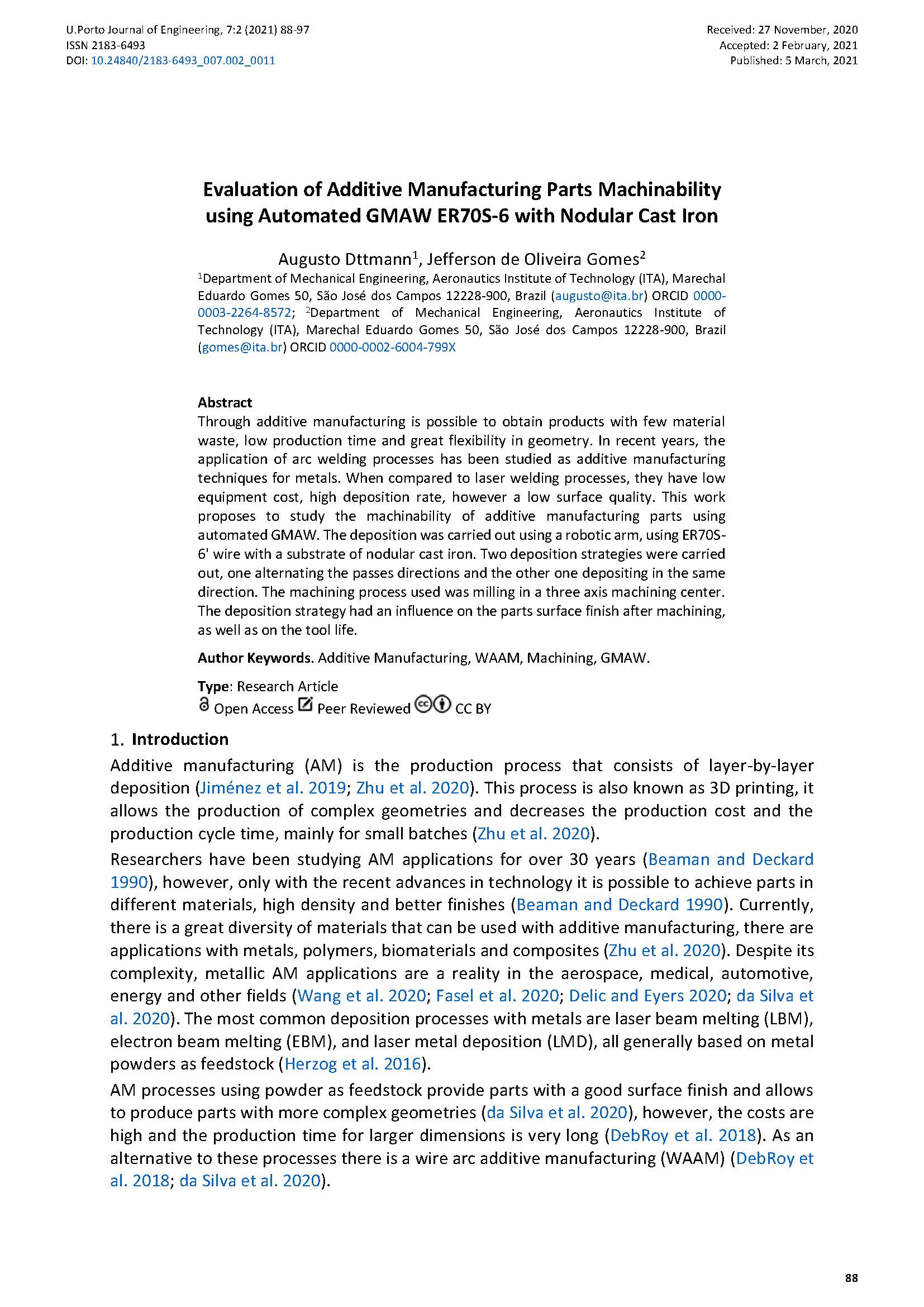Evaluation of Additive Manufacturing Parts Machinability using Automated GMAW ER70S-6 with Nodular Cast Iron
Main Article Content
Abstract
Through additive manufacturing is possible to obtain products with few material waste, low production time and great flexibility in geometry. In recent years, the application of arc welding processes has been studied as additive manufacturing techniques for metals. When compared to laser welding processes, they have low equipment cost, high deposition rate, however a low surface quality. This work proposes to study the machinability of additive manufacturing parts using automated GMAW. The deposition was carried out using a robotic arm, using ER70S-6' wire with a substrate of nodular cast iron. Two deposition strategies were carried out, one alternating the passes directions and the other one depositing in the same direction. The machining process used was milling in a three axis machining center. The deposition strategy had an influence on the parts surface finish after machining, as well as on the tool life.
Downloads
Article Details

This work is licensed under a Creative Commons Attribution 4.0 International License.
Authors who publish with this journal agree to the following terms:
- Authors retain copyright and grant the journal right of first publication with the work simultaneously licensed under a Creative Commons Attribution License that allows others to share the work with an acknowledgement of the work's authorship and initial publication in this journal.
- Authors grant the journal the rights to provide the article in all forms and media so the article can be used on the latest technology even after publication and ensure its long-term preservation.
- Authors are able to enter into separate, additional contractual arrangements for the non-exclusive distribution of the journal's published version of the work (e.g., post it to an institutional repository or publish it in a book), with an acknowledgement of its initial publication in this journal.
- Authors are permitted and encouraged to post their work online (e.g., in institutional repositories or on their website) prior to and during the submission process, as it can lead to productive exchanges, as well as earlier and greater citation of published work (See The Effect of Open Access).

